Other than one boat-based trip from Bali to Komodo, I had never been to Asia. I have long wanted to visit Borneo, and Hans Breuer's Borneo Dispatches on Field Herp Forum increased this desire to a nearly unsustainable level. Then the amazing Malaysian photographer known as Kurt Orion G announced that he would start leading herping tours, and I could no longer resist: my next big herping trip would be to Malaysia.
I started in Peninsular Malaysia, with Kurt picking me up from the Kuala Lumpur airport and taking me to a hotel. There I had a few hours to unpack and prepare for our first night of herping. Our destination was a network of lowland forest trails on the outskirts of KL. It was raining lightly when we arrived at about 8PM, and the rain was on and off all night long. Rain would be a persistent theme of my entire trip. Rain is never surprising in the tropics, but this was an unusually rainy January, and I saw very little sun anywhere in Malaysia. This no doubt depressed the number of snakes we encountered, and severely reduced the number of diurnal herps. But oh, the frogs!
The forest teemed with bugs, because after all the frogs and lizards have to eat something besides each other. When no herps were visible I took photos of a handful of the more interesting invertebrates that would hold still for a few seconds.
The only lepidopteran in that category was this large fake-eyed one, which fluttered about us for quite a while and would occasionally alight on a plant or the ground for a few seconds.

By the way, please let me know if you spot any questionable IDs, or if you have ID suggestions for anything I haven't identified. My confidence in the IDs I settled on varies wildly.
This beautiful katydid has a larval form that looks almost exactly like an ant. I didn't see any of those. Or maybe I saw dozens of them? I didn't check.
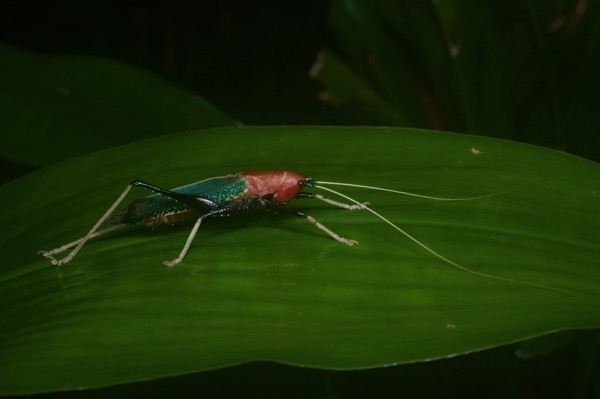
Nomadic huntsman spiders were everywhere, with their omnipresent eyeshine making it trickier to find the frogs.
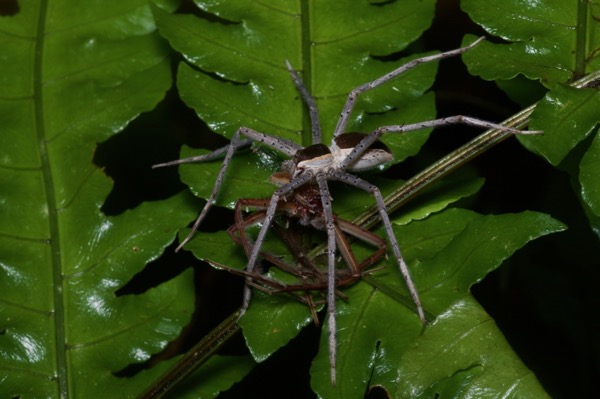
As everyone who has read about invertebrates from this part of the world knows by now, the coolest eight-legged beastie in the area is the David Bowie spider. I was under the impression that this spider was quite rare and only recently discovered, but in fact it seems to be reasonably common and is definitely easy to notice. The recency of its description (2008) is due to it being considered just a color variation of another well-known species before that time.
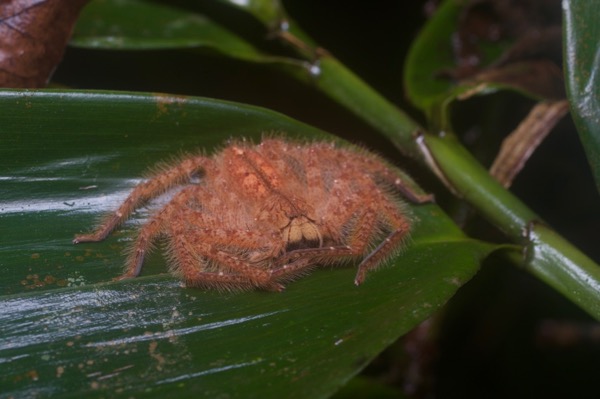
I was looking forward to seeing a bunch of phasmids in Malaysia, and I got off to a decent start on my first night.
There were teeny-tiny ones:
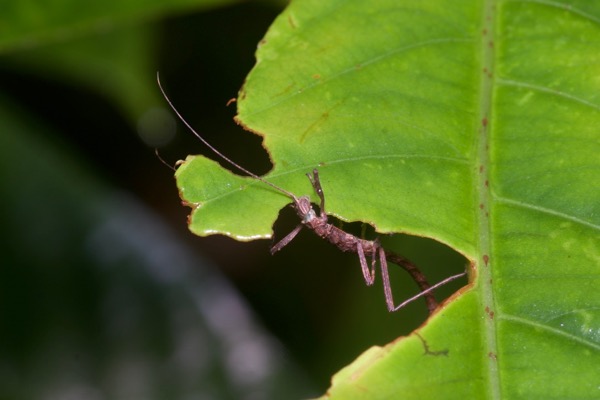
Medium-sized ones:
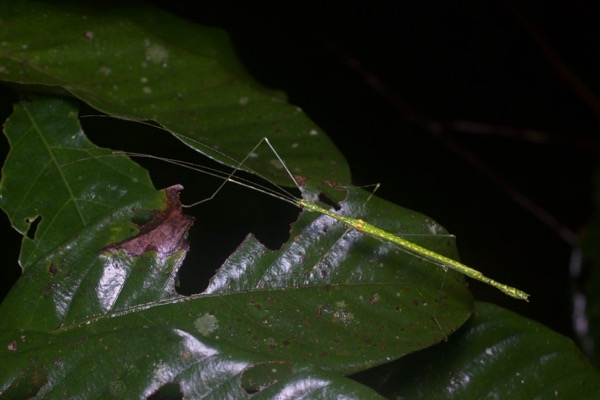
And gigantic ones:
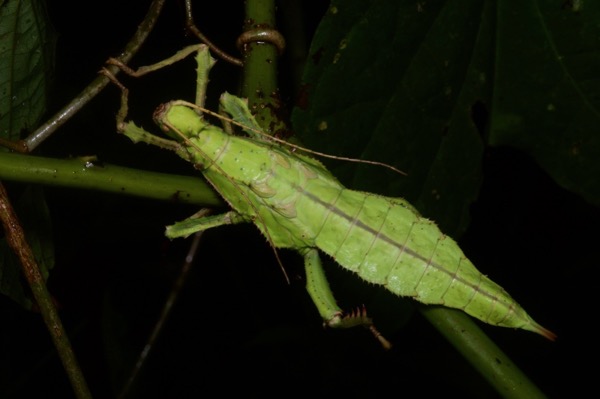
That's enough bugs for now. I was there to see herps! Because my previous Asian herping had been limited to a few day-active Indonesian species, nearly every species on the trip was a lifer for me. And because this was my first night, nearly every species on this night was a lifer for me. I originally thought that every single species was a lifer, but this perfect record was thwarted by a skink. Curses, common skink! But 22 lifers out of 23 species still makes for a fantastic night of herping.
Smallish toads were the most plentiful herps. Some of them were busy making more smallish toads.
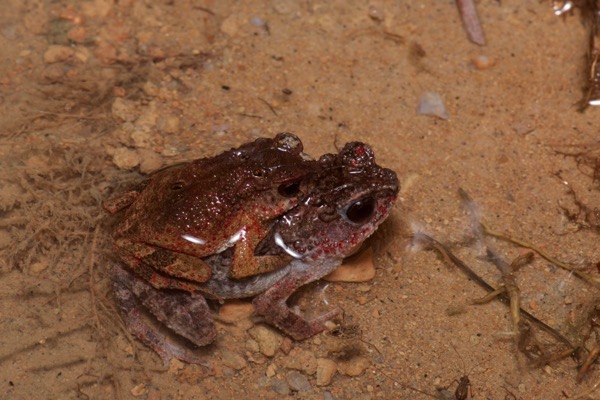
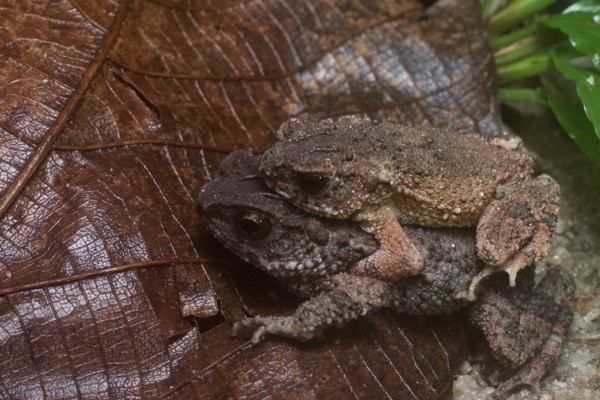
One of the smallish toads was a little different than the others, with a thin bright vertebral stripe. This is the wonderfully named Gollum Toad (yup, *that* Gollum). If you Google it, you'll see the phrase "It has only been recorded from Endau-Rompin National Park", but Lee Grismer, who described this species, has confirmed with Kurt the ID of the ones Kurt has photographed from this location.
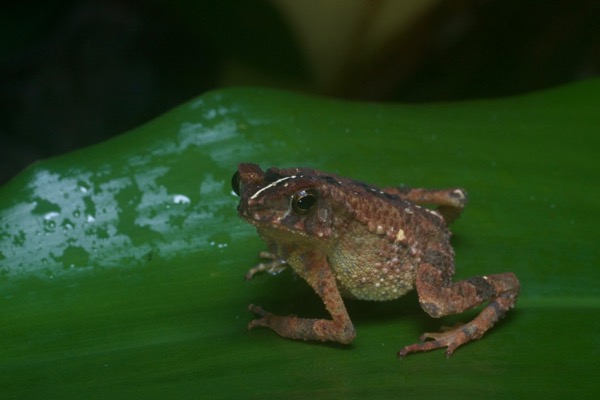
The only microhylid of the evening was the oxymoronically named Large Pygmy Frog.
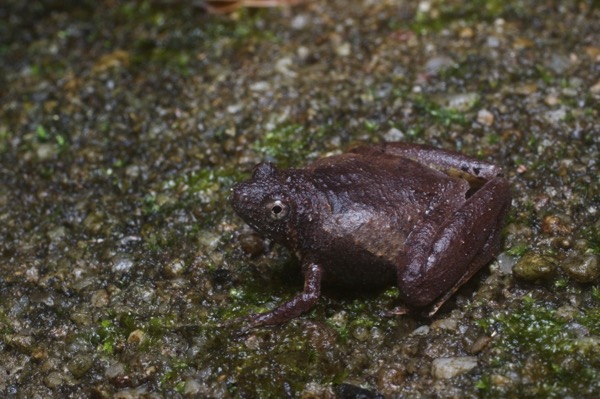
Not counting toads, most of the terrestrial/aquatic frogs were in the Dicroglossidae family, split out from Ranidae a while back. Some of these species are challenging to distinguish, so please let me know if you think I got any of them wrong.
I believe this one is the Asian Grass Frog, a common and widespread species.
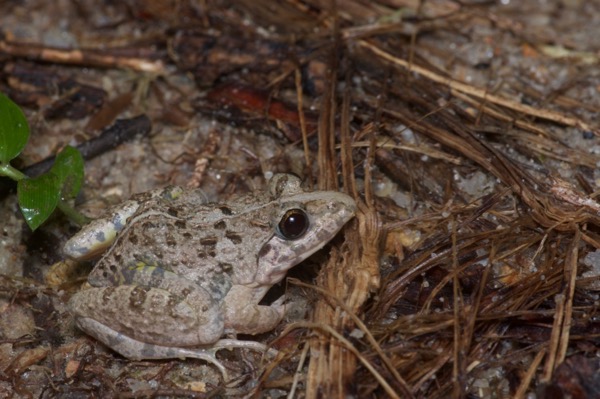
I think the rest of the Dicroglossidae frogs we saw were Limnonectes species, a large and confusing genus. The dorsal texture of this one makes me think it is a Corrugated Frog. But it also looks a lot like Occidozyga.
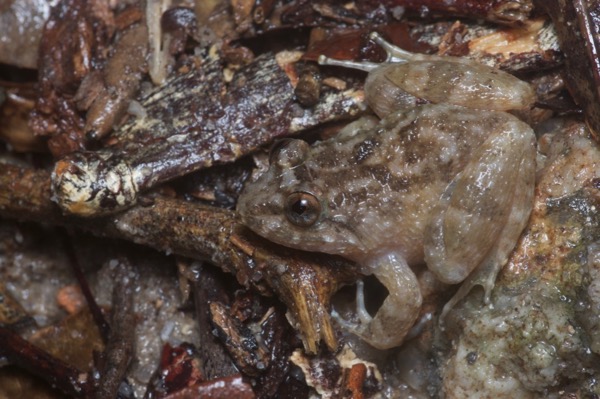
This little frog has a distinctive dorsal pattern and dorsolateral ridges. Also, it was cute.
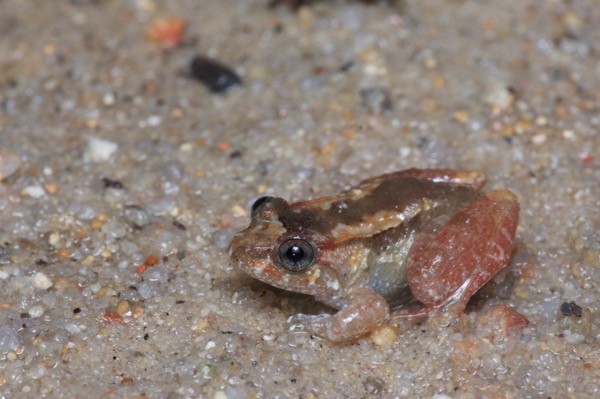
Another objectively cute species, the Rhinoceros Frog, is so named due to a weird bump on its head. But only the males have the weird bump, so the females like the one we saw have to settle for just being cute. And also having many parallel dorsal ridges, and being sorta orangeish.
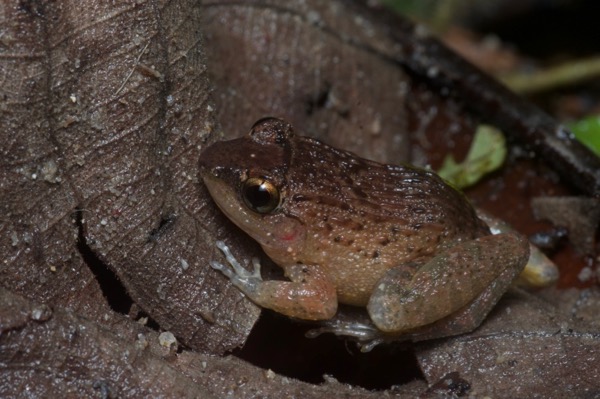
A couple of large and common forest-floor frog species were particularly tricky for me to tell apart. Each has diagnostic characteristics that seem good on paper, but are somewhat fuzzy and vague on individual frogs. I have pictures of several individuals of each species identified, with various degrees of certainty, from this night. I tried to pick one of the clearest examples of each. Up first is the Malesian Frog, which features a sharply-angled ridge over the tympanum, particularly prominent tubercles above the eyes, and a "W"-shaped scapular ridge.
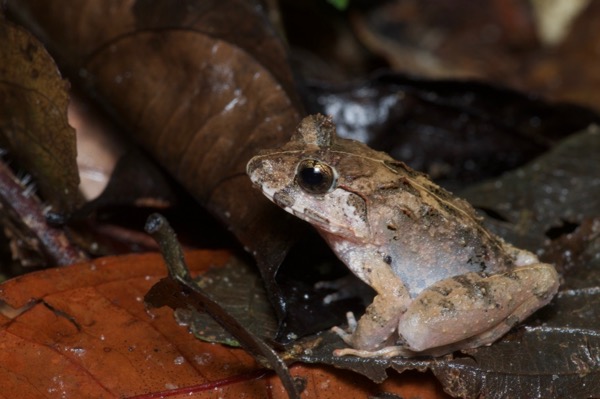
Up second is the Malayan Giant Frog, which features a gently-curved ridge over the tympanum, less-prominent tubercles above the eyes, and no "W"-shaped scapular ridge.
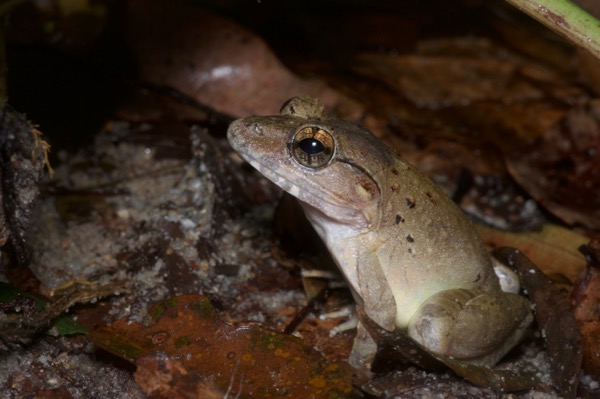
Not all of the Ranidae in Malaysia have been ferreted off to other families. The ones still in the classic "True Frog" family (what kind of lame-o family name is that?) include a variety of colors and lifestyles. Some of them would be among my favorite frogs of the trip, except that there are so many other types of frogs that are even better. It's frog paradise!
This very widespread and common ranid-that-you-might-almost-think-is-a-treefrog is a White-lipped Frog. This species has a confusing naming history, both for the scientific and common English name, due to various lumps and splits and reclassifications over the decades. But let's just call it a White-lipped Frog and avoid the temptation to call it a Copper-cheeked Frog, OK? Is that too much to ask? This subject will be revisited later, when I make it to Borneo.
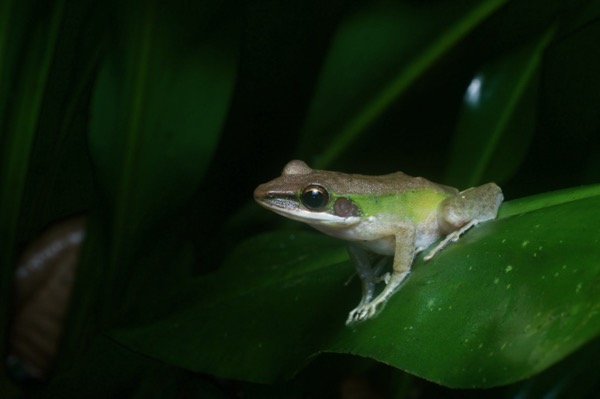
This particularly beautiful ranid is a Mahogany Frog. Kurt warned me that they were particularly jumpy as well as particularly beautiful, and worried that I was getting so close before pressing the shutter button that I was likely to end up with no photos at all. But the frog surprised us with its good-natured willingness to pose for exactly three photos. Then it bounded away in an instant.
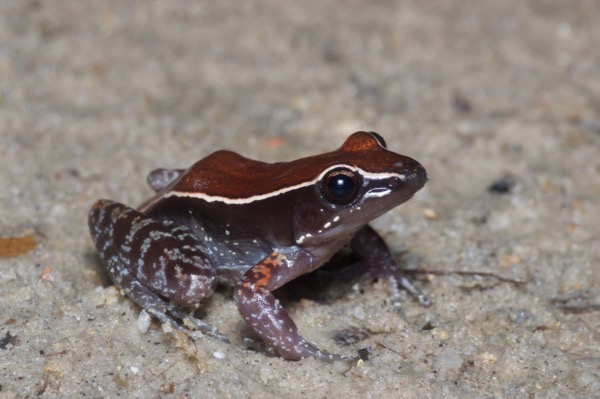
The best (objectively speaking, of course) and also most treefrog-like of the ranids was the Cinnamon Frog a.k.a. White-spotted Treefrog. It's so treefrog-like that people couldn't help putting "treefrog" in its name.
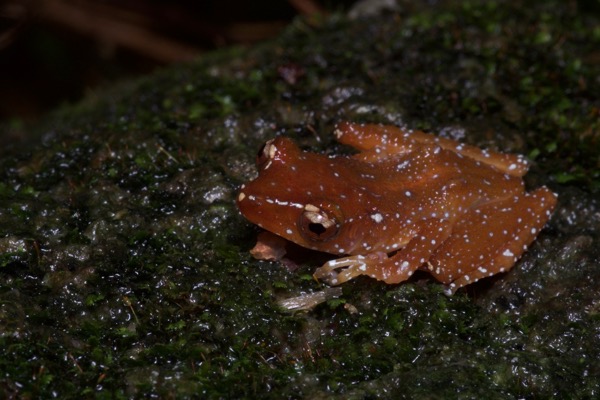
My introduction to the wonderful frog family Megophryidae was this Spotted Litter Frog. Like many species in this family, they typically sit up in the leaf litter on their humorously thin legs, waiting for some foolhardy creature to get near their freakishly large mouths. They are very reluctant to move, other than by flattening themselves down and playing dead if they get worried.
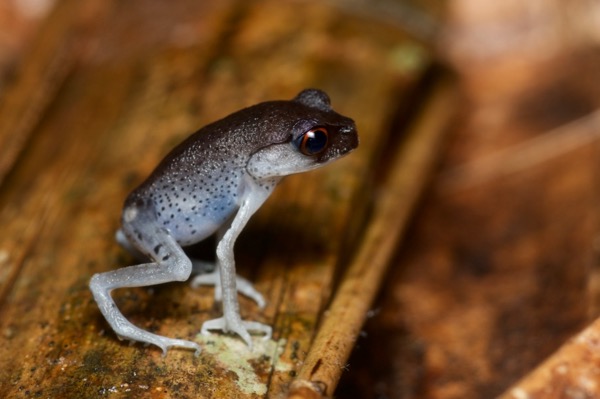
Even more treefrog-like than the ranids were the actual treefrogs. All of the treefrogs I saw were from the family Rhacophoridae, a.k.a. Asian Treefrogs. Which is not to say that there are no members of Hylidae in Asia, because there are. Also, Rhacophoridae is more closely related to Ranidae than to Hylidae, which is just extra confusing. But at least they look and act like treefrogs.
The treefrog I saw in the most places was the Four-lined Treefrog, also boringly called the Common Treefrog. A fine-looking if non-exceptional treefrog.
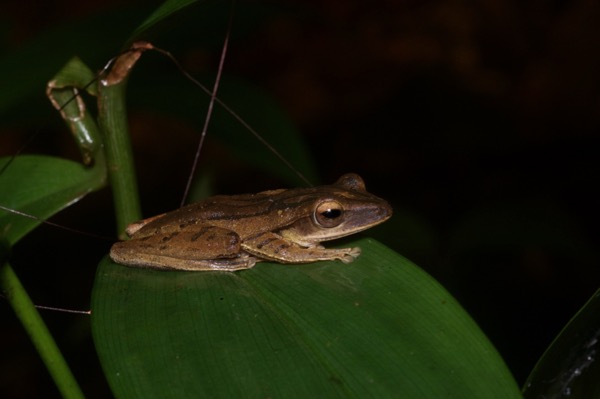
OK, here's where the going gets particularly good. As with many other sensible herp-lovers visiting Southeast Asia, the species I most wanted to see on this trip was the legendary Wallace's Flying Frog. It's a frog that flies! It was described by Alfred Russel Wallace! You know how great that is. Don't pretend not to. Kurt didn't want to disappoint, so he found two of these for me on my first night in Malaysia.
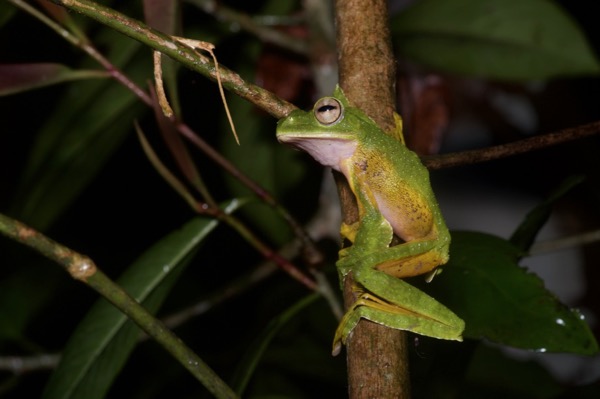
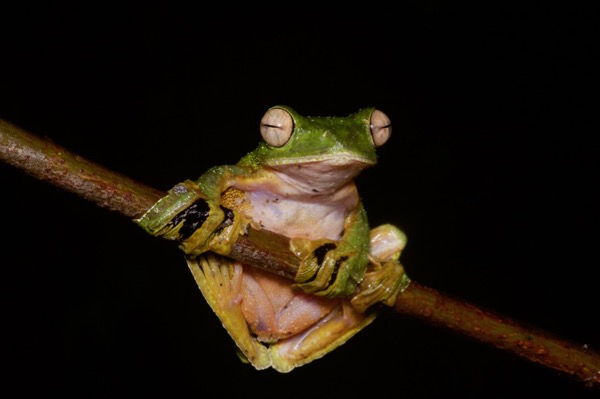
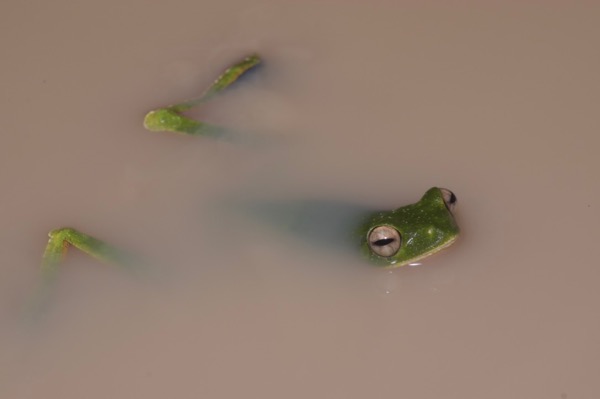
Just when I thought the frogging situation could not possibly be improved, Kurt heard the call of another species of flying frog, way up high. A few minutes later the frog was on the ground next to us. Did it fly down to Kurt's magical call? Perhaps. Or perhaps a very long bamboo frond was somehow involved.
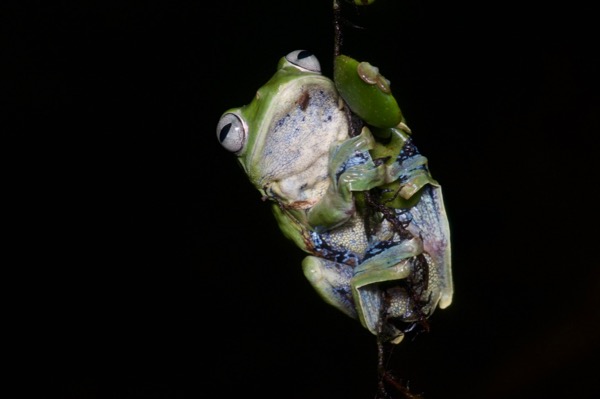
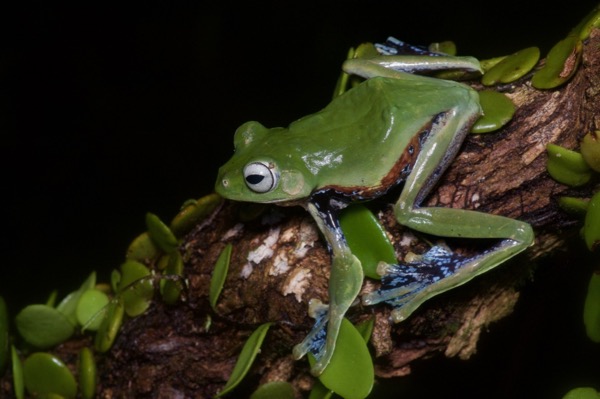
Shortly before we arrived at the trailhead, someone had come by with a bucket of lizards and tossed handfuls of them into the foliage. Mind you, I didn't actually see this happen, but it seems like the only possible explanation for the positions of the numerous Common Garden Lizards (Calotes versicolor) that we came across.
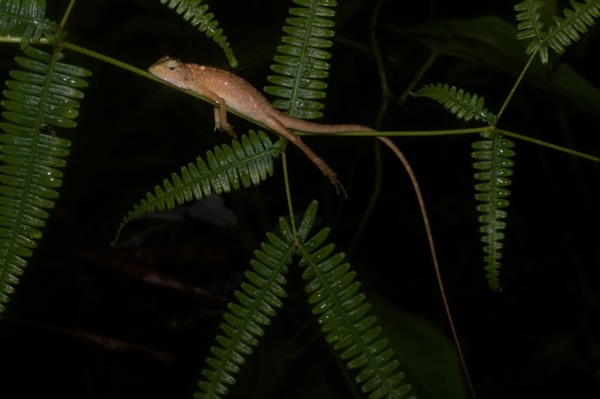
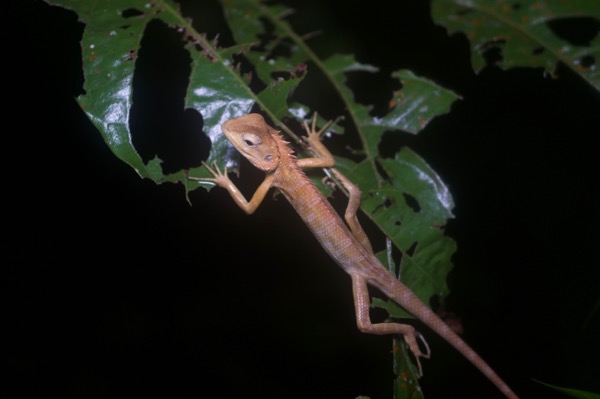
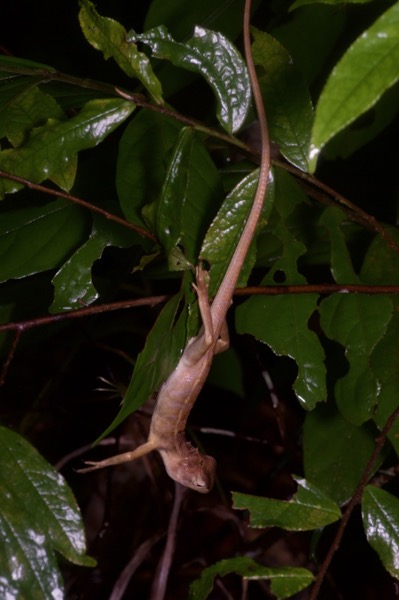

We saw several geckos, all of the same species. Kurt sees so many of these that they were barely worth a glance to him, but they were my very first Cyrtodactylus so each one made me happy.
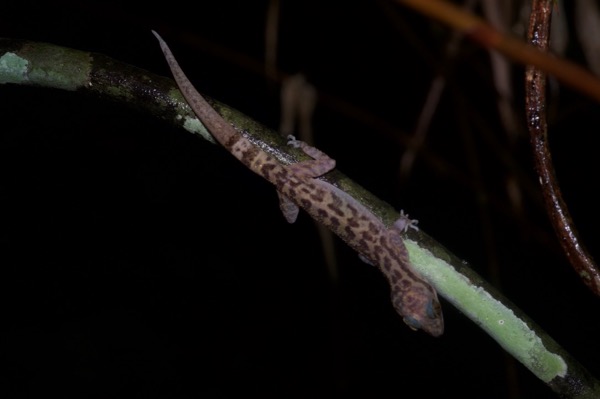
During a light rain I saw a small copper lizard skulking about in the leaf litter. I recognized it as a skink immediately, but didn't know what my skink options were in this area. And a nocturnal, rain-loving skink seemed potentially interesting! Alas, it was not only the juvenile of an extremely common and widespread species, but in fact a species I had seen before, in Bali. And thus the ruination of my perfect night where every herp species was a lifer. However, if I wait a few years, the species will presumably be split into a dozen or so new species, and then I will be able to look back on this as an all-lifer night. So just forget I mentioned the skink. There was no skink.
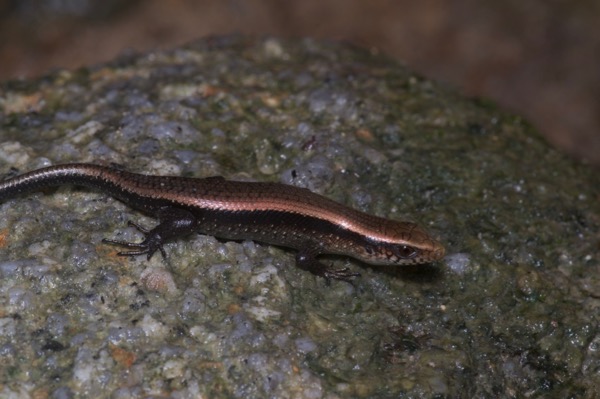
My first Malaysian snake was this beautifully iridescent Blue Bronzeback that Kurt spotted. These snakes are diurnal, but are most easily seen sleeping at night. We woke this one up to get some photos before it curled up again.

Kurt also spotted another Bronzeback species later in the evening.
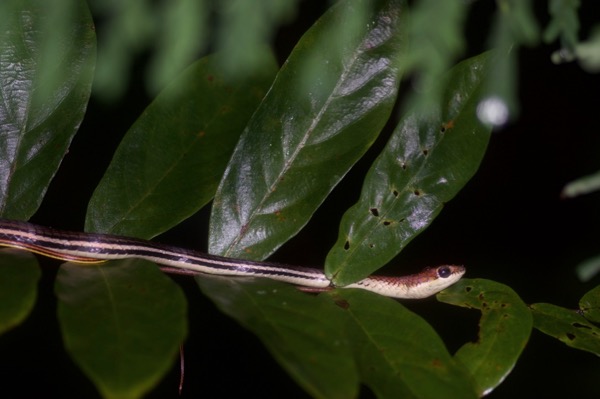
My only contribution to the evening's snake count was this very pretty and very full White-spotted Cat Snake. We pulled aside a couple of leaves for a less obstructed view, but otherwise didn't bother it since it was obviously digesting a huge meal (probably one of those bucket-tossed lizards).
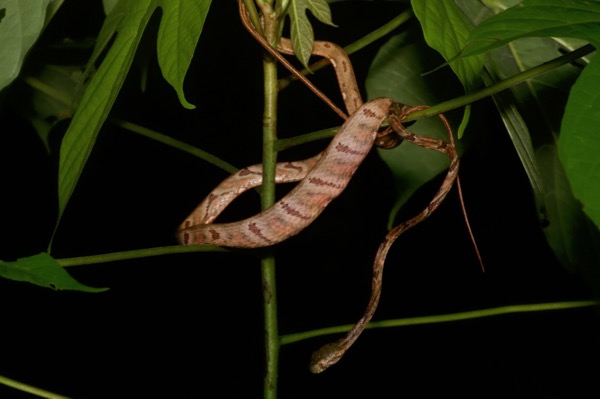
The ophidian highlight of the night was definitely this adult female Wagler's Pit Viper, which Kurt spotted from quite a distance away. Just look at that crazy lipstick!
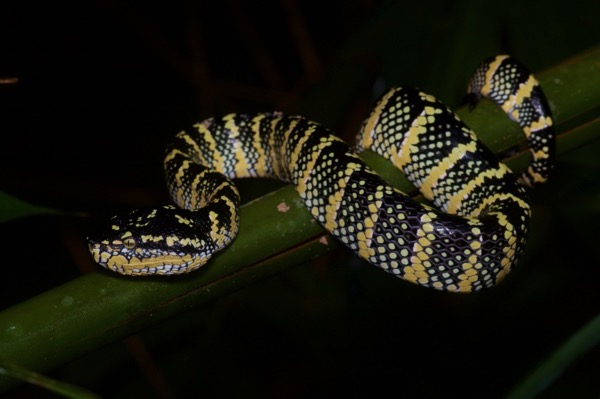
We made it back to my Kuala Lumpur hotel at 4:30am in a torrential downpour. That was my first day in Malaysia. Something told me this was going to be a fun trip.